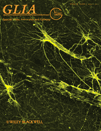
JOURNAL OF NEUROIMMUNOLOGY
Scope & Guideline
Fostering Innovation in Neuroimmune Research
Introduction
Aims and Scopes
- Autoimmune Neurological Disorders:
Research on various autoimmune conditions affecting the nervous system, such as multiple sclerosis, neuromyelitis optica, and autoimmune encephalitis, including their pathophysiology, clinical features, and treatment responses. - Neuroinflammation:
Studies exploring the mechanisms of neuroinflammation, including the roles of microglia, cytokines, and immune cell interactions in neurodegenerative diseases and brain injuries. - Biomarkers and Diagnostic Tools:
Investigations into biomarkers for diagnosis and prognosis of neurological diseases, focusing on cerebrospinal fluid and serum markers that reflect disease activity and therapeutic responses. - Therapeutic Interventions:
Clinical trials and laboratory studies assessing the efficacy and safety of various treatment modalities, including immunotherapies, disease-modifying therapies, and novel pharmacological agents. - Genetic and Environmental Factors:
Research examining the genetic predispositions and environmental triggers associated with autoimmune neurological disorders, contributing to personalized medicine approaches.
Trending and Emerging
- Microbiome and Neuroinflammation:
A growing body of research is exploring the gut-brain axis and its implications for neuroinflammatory diseases, indicating a trend towards understanding how microbiota influence neurological health. - Long COVID and Neurocognitive Effects:
Research focusing on the neurological manifestations of long COVID is rapidly increasing, emphasizing the need to understand the long-term impacts of COVID-19 on the nervous system. - Precision Medicine Approaches:
There is a notable trend towards personalized treatment strategies based on genetic and immunological profiles, indicating a shift in how neuroimmunological disorders are approached therapeutically. - Immune Cell Dynamics in Neurological Diseases:
Studies examining the roles and dynamics of various immune cell populations in the context of neurological diseases are emerging as a significant area of research, reflecting a deeper understanding of immune interactions. - Neuroinflammation as a Therapeutic Target:
Research is increasingly focusing on neuroinflammation as a target for therapeutic intervention, with studies investigating novel anti-inflammatory strategies and their potential benefits in neurodegenerative diseases.
Declining or Waning
- Viral Infections and Neuroimmunology:
Research on the direct links between viral infections and the onset of neuroinflammatory diseases has decreased, possibly due to the saturation of existing knowledge and a shift towards more complex autoimmune mechanisms. - Traditional Pharmacological Therapies:
Studies focusing solely on conventional therapies for neurological conditions are less frequent, as there is a growing emphasis on novel therapeutic approaches and personalized medicine. - Epidemiological Studies without Novel Insights:
Epidemiological studies that do not provide new insights or therapeutic implications are becoming less common, as the journal shifts towards more innovative and impactful research.
Similar Journals

Autoimmune Diseases
Unlocking breakthroughs in autoimmune disease management.Autoimmune Diseases is a leading open-access journal published by Hindawi Ltd, dedicated to advancing the understanding and treatment of autoimmune disorders. Since its inception in 2010, this journal has provided a vital platform for researchers, clinicians, and students to share innovative findings and insights from the field of immunology. With an impressive Scopus ranking that highlights its relevance, particularly in the areas of Immunology and Microbiology and Immunology and Allergy, Autoimmune Diseases occupies a key position in the scientific discourse, ranking in the top quartiles across various categories. Researchers publishing in this journal benefit from a wide audience and high visibility, reflecting the increasing importance of understanding autoimmune diseases in today’s health landscape. Accessible to all, the journal promotes collaborative research and discussion, making it an essential resource for anyone dedicated to the study and management of autoimmune conditions.

NEUROMOLECULAR MEDICINE
Advancing the Frontiers of Neuroscience and Molecular MedicineNEUROMOLECULAR MEDICINE, published by HUMANA PRESS INC, is a prestigious peer-reviewed journal dedicated to advancing the fields of cellular and molecular neuroscience, molecular medicine, and neurology. With an ISSN of 1535-1084 and an E-ISSN of 1559-1174, the journal boasts a significant presence in academic research since its inception in 2002 and continues to publish cutting-edge studies through 2024. Ranked in the Q2 category for 2023 in various disciplines, including Neuroscience and Molecular Medicine, it holds impressive positions in Scopus rankings, including 41st out of 192 in Neuroscience and Neurology. Although not an open access journal, NEUROMOLECULAR MEDICINE remains invaluable for researchers, professionals, and students seeking to explore the intricate relationships between molecular mechanisms and neurological functions, thereby contributing to the scientific understanding of nervous system diseases and therapeutic innovations.

GLIA
Leading the Charge in Neuroscience InnovationGLIA is a premier journal in the fields of Cellular and Molecular Neuroscience and Neurology, published by WILEY. With an impressive track record since its inception in 1988, GLIA has become an essential resource for researchers and professionals interested in the complexities of glial cells and their roles in the nervous system. Featuring articles that encompass a wide range of topics, from basic research to clinical implications, the journal is committed to advancing our understanding of neurological functions and disorders. Although not an open access publication, GLIA maintains its reputation with a significant impact factor, consistently ranking in the Q1 category as noted in 2023 Scopus rankings. With its comprehensive scope and high-quality peer-reviewed content, GLIA serves as a vital platform for disseminating groundbreaking research in the ever-evolving landscape of neuroscience.

NATURE NEUROSCIENCE
Shaping the Future of Neuroscience, One Article at a TimeNATURE NEUROSCIENCE is a premier journal published by NATURE PORTFOLIO, focusing on cutting-edge research in the field of neuroscience. With an esteemed impact factor that reflects its significance in the academic community, this journal occupies an exceptional place in the 2023 Q1 category for neuroscience (miscellaneous) and boasts a leading Scopus rank of #1 out of 113 in general neuroscience, placing it within the top 1st percentile. Since its inception in 1998, NATURE NEUROSCIENCE has consistently delivered high-quality, peer-reviewed articles that contribute to our understanding of the nervous system, driving innovation and scholarship across disciplines. Although it does not offer open access, the journal remains a vital resource for researchers, professionals, and students seeking to stay at the forefront of neuroscientific discovery and discussion. Its editorial commitment to excellence ensures that it continually shapes the trajectory of neuroscience research well into 2024 and beyond, making it an indispensable asset for anyone passionate about the brain and its complexities.

IMMUNOBIOLOGY
Advancing the frontiers of immunology and hematology.IMMUNOBIOLOGY is a prestigious academic journal published by Elsevier GmbH that significantly contributes to the fields of hematology and immunology. With its ISSN 0171-2985 and E-ISSN 1878-3279, this journal has been disseminating impactful research since 1979, positioning itself at the forefront of immunological and hematological advances. The journal holds a commendable ranking of Q2 in Hematology and Q3 in both Immunology and Immunology and Allergy, indicating its relevance and influence within the scientific community, as reflected by its Scopus rankings. Although IMMUNOBIOLOGY operates under a subscription model, it remains dedicated to expanding knowledge across disciplines, fostering innovative research, and facilitating connections among researchers, professionals, and students. Situated in Munich, Germany, this journal is continually evolving and aims to remain an essential resource for the latest discoveries and insights in the realms of immunity and blood disorders, ultimately enhancing our understanding of complex biological systems.

NEUROIMMUNOMODULATION
Advancing Understanding of Neural-Immune InteractionsNEUROIMMUNOMODULATION is a well-respected journal published by KARGER that focuses on the intricate interactions of the nervous and immune systems. With its ISSN 1021-7401 and E-ISSN 1423-0216, it serves as a vital resource for researchers and professionals interested in neuroimmunology and related fields. The journal has been committed to disseminating high-quality research from its inception in 1994 and continues to thrive, with its scope converged until 2024. Notably, it holds a Q3 ranking in 2023 across diverse categories such as Endocrine and Autonomic Systems, Endocrinology, Immunology, and Neurology, reflecting its significance in the scientific community. Although the journal is not open access, it remains an essential publication for advancing knowledge and fostering collaboration among scholars, making it a noteworthy source of cutting-edge findings in the complex interplay between neural and immune processes.

INTERNATIONAL JOURNAL OF IMMUNOPATHOLOGY AND PHARMACOLOGY
Pioneering Insights in Immune Responses and Therapeutic Innovations.Welcome to the International Journal of Immunopathology and Pharmacology, a premier publication dedicated to advancing the fields of immunology and pharmacology. Published by SAGE Publications Inc., this Open Access journal has been a vital resource since its inception in 1989, providing an expansive platform for innovative research and comprehensive reviews until 2024. With a strong focus on the mechanisms of immune responses and therapeutic developments, our journal stands out with a 2023 impact factor reflected in its Q3 ranking in Immunology and Allergy, and a Q2 ranking in Pharmacology. The journal's Scopus rankings highlight its significance, ranking #174 in Pharmacology, #141 in Medicine, and #156 in Immunology, all affirming its role in contributing to the broader scientific community. Through rigorous peer review and a commitment to high-quality research, the International Journal of Immunopathology and Pharmacology continues to be an essential resource for scientists, healthcare professionals, and students striving to enhance their knowledge and understanding in these critical fields.

ACTA NEUROPATHOLOGICA
Exploring Breakthroughs in Clinical Neurology and PathologyACTA NEUROPATHOLOGICA, published by Springer, is a leading journal in the fields of cellular and molecular neuroscience, clinical neurology, and pathology, recognized for its exceptional quality and impactful research. With an impressive impact factor and currently ranked in the Q1 tier across multiple categories in 2023, this journal serves as a premier platform for the dissemination of groundbreaking findings in neuropathology. The journal's robust Scopus rankings highlight its influence, standing at #2 in Pathology and Forensic Medicine and #5 in Clinical Neurology. Since its inception in 1961, ACTA NEUROPATHOLOGICA has provided crucial insights into neurological diseases and disorders, contributing significantly to the advancement of medical science. Aimed at researchers, practitioners, and students alike, this journal fosters a deeper understanding of neurological conditions and encourages innovative approaches within the field. It is essential reading for anyone dedicated to unraveling the complexities of the nervous system.

Neurology-Neuroimmunology & Neuroinflammation
Advancing knowledge at the intersection of neurology and immunology.Neurology-Neuroimmunology & Neuroinflammation, published by LIPPINCOTT WILLIAMS & WILKINS, stands at the forefront of research in the rapidly evolving fields of neurology and neuroimmunology. Since its inception in 2014, this prestigious journal has embraced an Open Access model, ensuring that groundbreaking findings are readily available to researchers, clinicians, and students worldwide. Covering a broad spectrum of topics related to neuroinflammation, the journal has gained a remarkable reputation, attaining a Q1 ranking in both Neurology and Neurology (clinical) as of 2023, and ranking #6 out of 192 in the neuroscience category on Scopus. The journal's commitment to high-quality research aims to facilitate the understanding of neurological disorders, promote innovative therapies, and inspire collaboration among professionals. Addressing critical issues at the intersection of neurology, immunology, and clinical practice, Neurology-Neuroimmunology & Neuroinflammation is an essential platform for the dissemination of knowledge and the advancement of this vital field.

NEUROLOGICAL RESEARCH
Unraveling the Complexities of the Nervous SystemNEUROLOGICAL RESEARCH, published by TAYLOR & FRANCIS LTD, is a distinguished journal focusing on the diverse and evolving field of neurology. Established in 1979, this journal has been a prominent platform for disseminating groundbreaking research and clinical advances up to 2024. With an ISSN of 0161-6412 and an E-ISSN of 1743-1328, it offers valuable insights for researchers, professionals, and students interested in the intricate workings of the nervous system. The journal holds a respectable Q2 ranking in the field of Medicine (miscellaneous) and Q3 in the categories of Neurology and Clinical Neurology, reflecting its commitment to high-quality research. Although NEUROLOGICAL RESEARCH does not currently offer an open access option, its contributions to the literature are vital for fostering advancements in neurological understanding and treatment. With an engaged readership and a mission to advance scientific knowledge, NEUROLOGICAL RESEARCH serves as a crucial resource for anyone dedicated to neurological health and innovation.